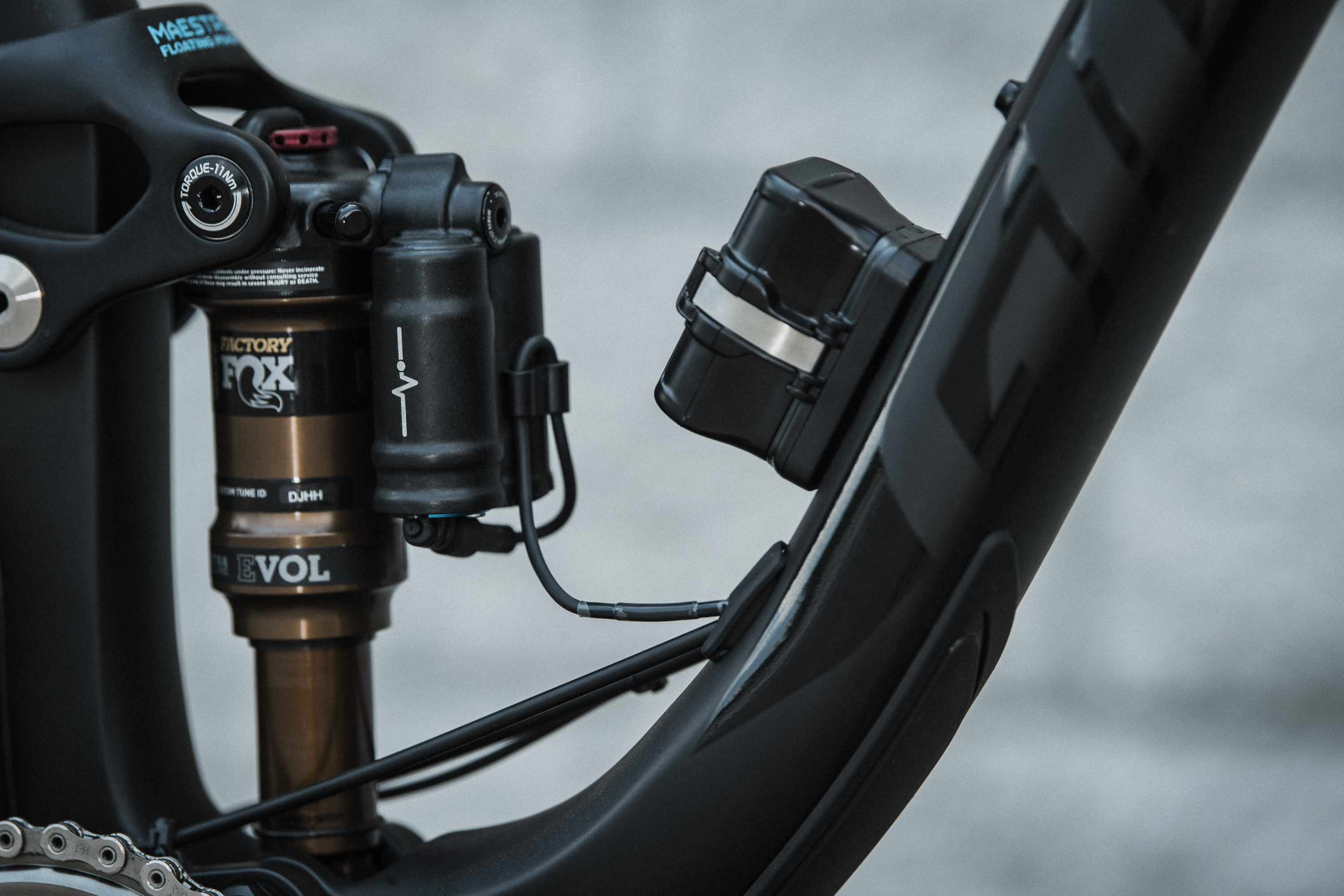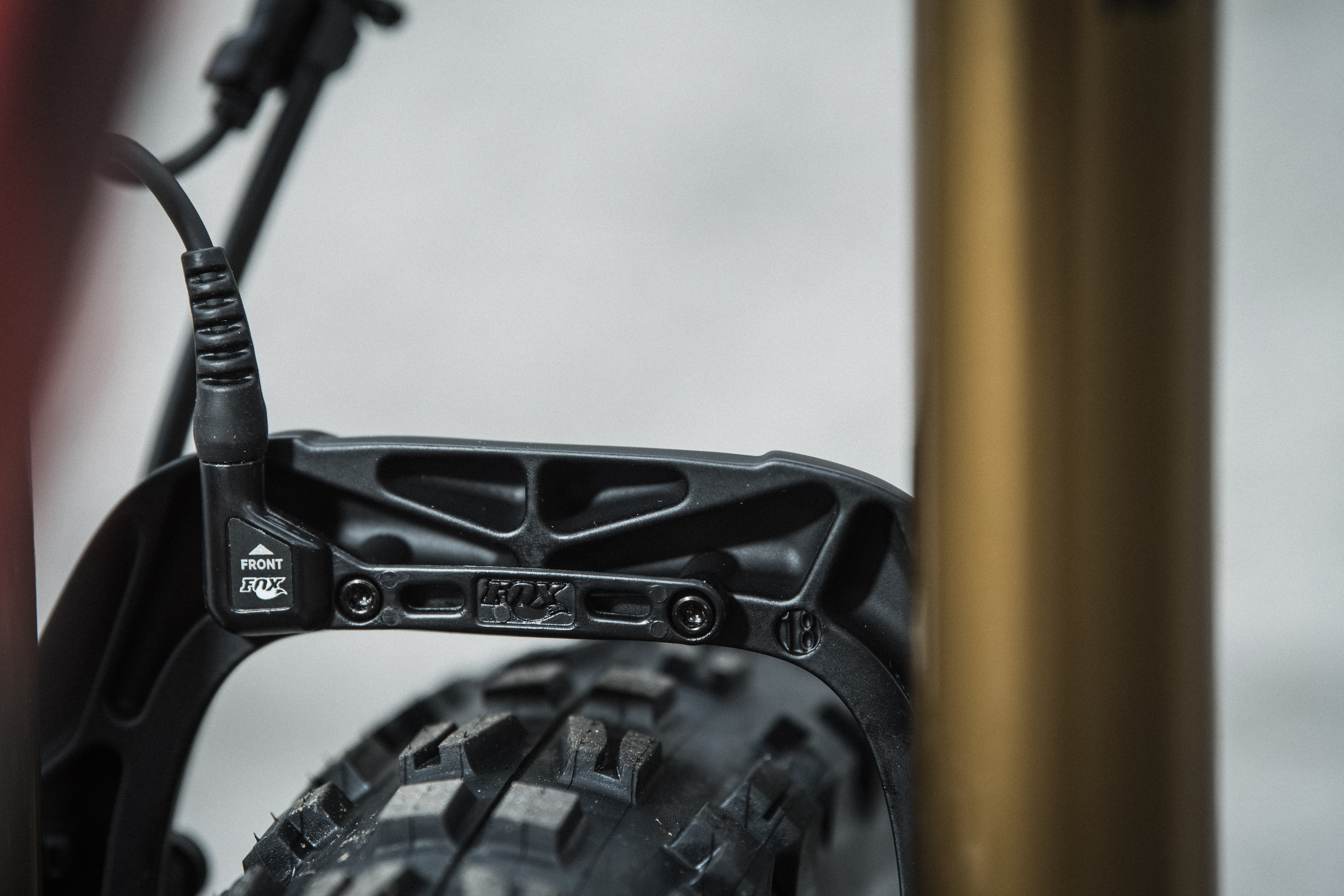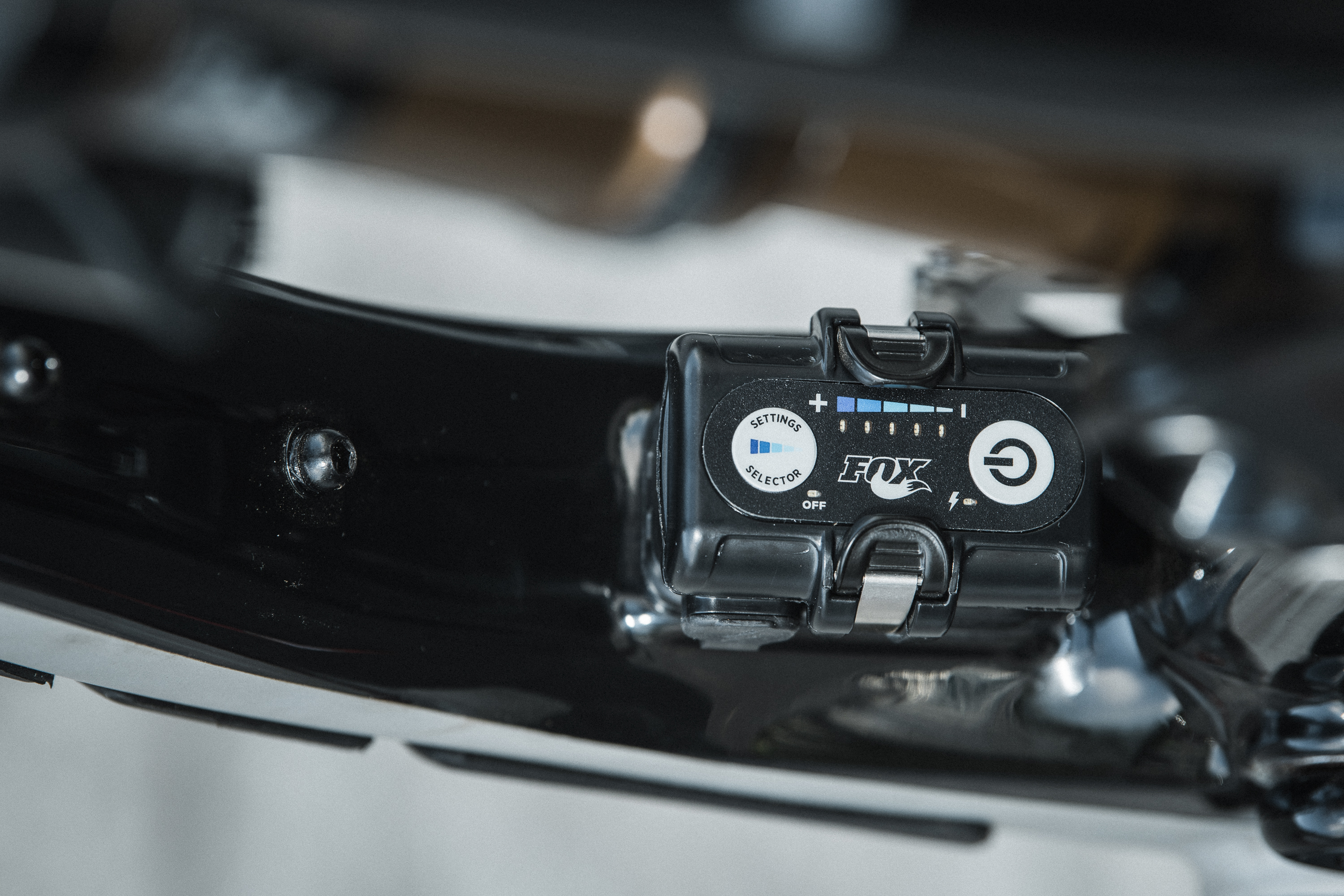Fox Live Valve – Smarter shocks for a better future?
Originally posted on August 28, 2018 at 13:10 pmEffectively an open secret for at least a year, Fox is finally taking the lid off its new computer-controlled shock valving. 
Fox describes Live Valve as a “fast-acting automated electronic suspension system”. This system is made up of tiny motors to control the valving, accelerometers on the front and rear wheels, a control unit (CPU), a battery and a handlebar remote.
This isn’t the first attempt to use computers to control suspension on bikes. Lapierre tried this out recently with some add-on controllers for RockShox dampers and Pro-Flex tried it with piezoelectric-controlled dampers that I believe came from parent-company K2’s skis. Yes, skis with brains. The 90’s were a weird time.
But this is Fox. The Fox that has been putting electronic controlled shocks on off-road trucks and UTV. The Fox that introduced electronic remotes a few years back. The Fox that seems to have waited until this project was fully baked before taking it out of the oven.
 Fox claims the control unit reads data from the wheel sensors 1000 per second and can change damping modes in 3 milliseconds. In theory (I haven’t ridden this stuff yet) the system should be able to detect an impact at the front wheel and open the fork quickly enough that the rider won’t detect it at the handlebars.
Fox claims the control unit reads data from the wheel sensors 1000 per second and can change damping modes in 3 milliseconds. In theory (I haven’t ridden this stuff yet) the system should be able to detect an impact at the front wheel and open the fork quickly enough that the rider won’t detect it at the handlebars.
Fox uses proprietary latching solenoids to control the damping. It does not need any power to stay open or closed and takes very little juice from the battery to change positions. This is a good thing, as Fox says the system averages 480 actuations per hour. That’s 8 times a minute or once every 7.5 seconds.
Obviously, this is a very complicated system, but one goal is to create a very simple experience for the rider. To that end, there are only controls on the battery/controller unit, with 5 firmness settings. The fork and shock will still need to be set up for proper rebound and low-speed compression in the “open” setting can be adjusted as well. No remotes, no levers, just turn on and ride. Let the algorithms do the heavy lifting.
If you know where to look, you can find the mounting points for this system on some new bikes. Live Valve doesn’t need the hardpoints for sensor mounting to work but it will look at lot neater on a frame designed with integration in mind.
Battery life is between 16-20 hours, depending on terrain. A full charge takes 1.5-2 hours, but 15 minutes of charge time will get you at least 2 hours of ride time. If the charge runs out, the shocks default to the open position, thankfully.
Compared to the standard cable remotes on something like a Scott Genius, Live Valve adds less than 150 grams. Since most bikes don’t run remotes these days, the controller, sensor and battery add about 175 grams; I’m not sure if that includes the weight of the wires. When milliseconds matter, wireless protocols lose every time to a wired connection.
Fox has a Live Valve option for everything short of downhill bikes.
Fork applications:
- 32 Step-Cast
- 34
- 34 Step-Cast
- 36 up to 170 (29) / 180 (27.5)
Shock applications:
- Standard, metric, trunnion
- LV eyelet / EVOL air sleeve only
- Reservoir flips 180 degrees depending on frame fitment
After Market Pricing
• 32 Step-Cast – $3000
• 34 – $3000
• 34 Step-Cast – $3125
• 36 – $3250
Pivot, Giant and Scott will have complete bikes now or very soon. Rocky Mountain and Pivot have compatible frames and Niners are on the way.
It will be interesting to see if the electric bits stick around this time or Live Wire will find fans outside enduro and XC racers where there is an obvious advantage to a system like this, assuming it works as advertised. Will the more everyday trail rider (with a sizeable disposable income) find the performance increase worth the extra money and hassle of one more gadget to charge? I think the biggest hurdle is Fox’s own excellent “analog” suspension.
[wonderplugin_gallery id=”80″]





